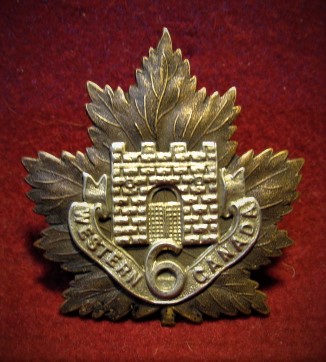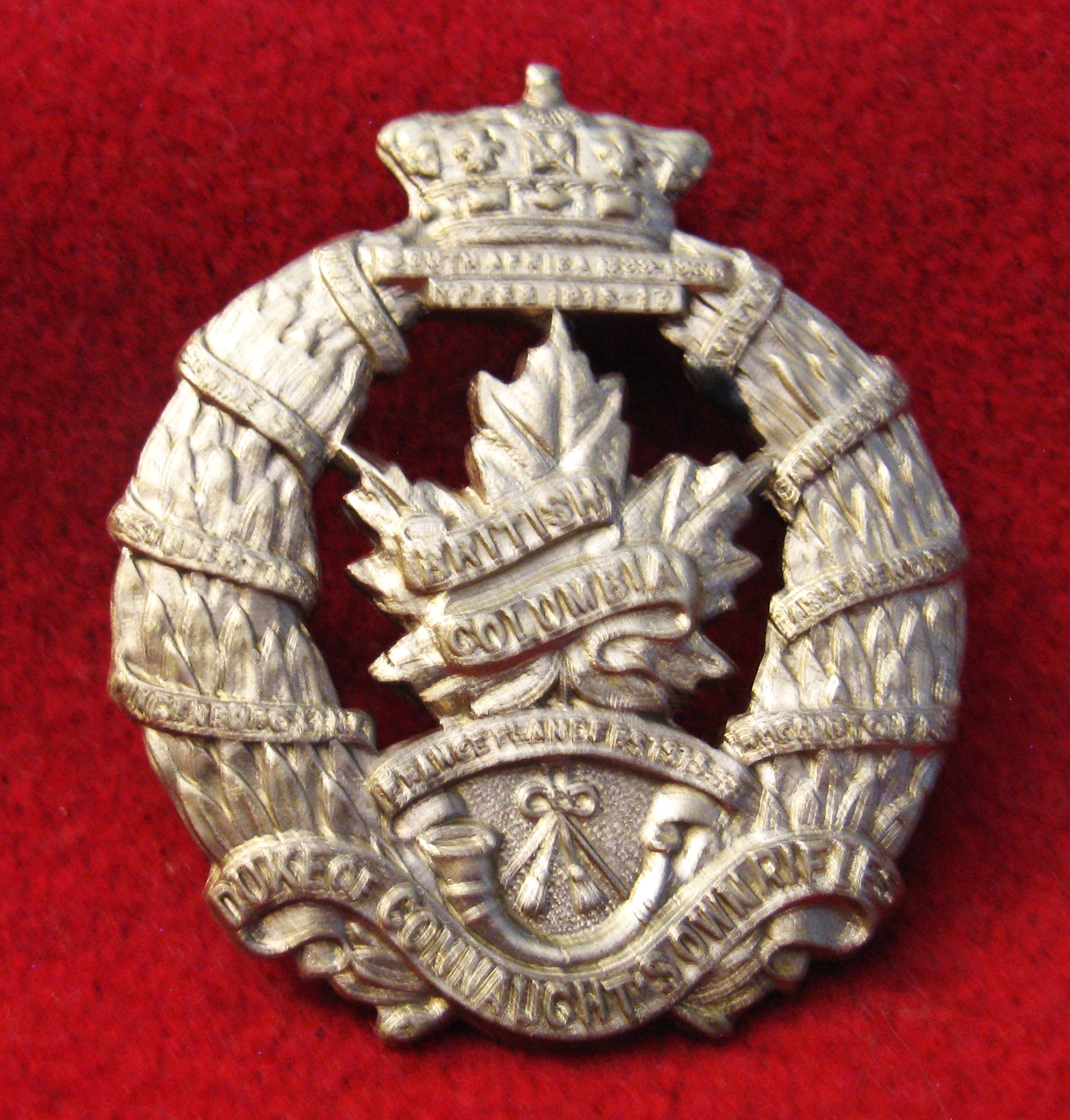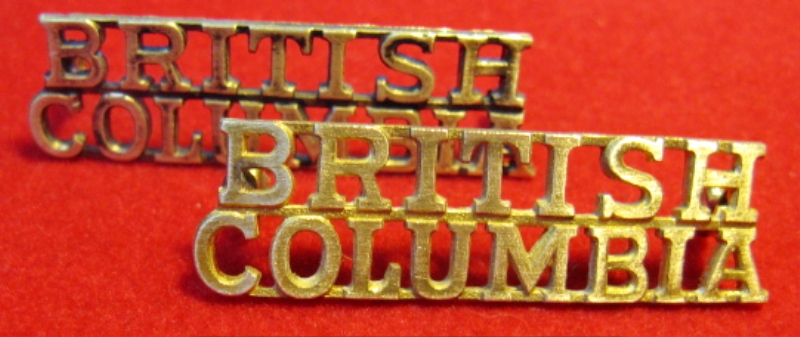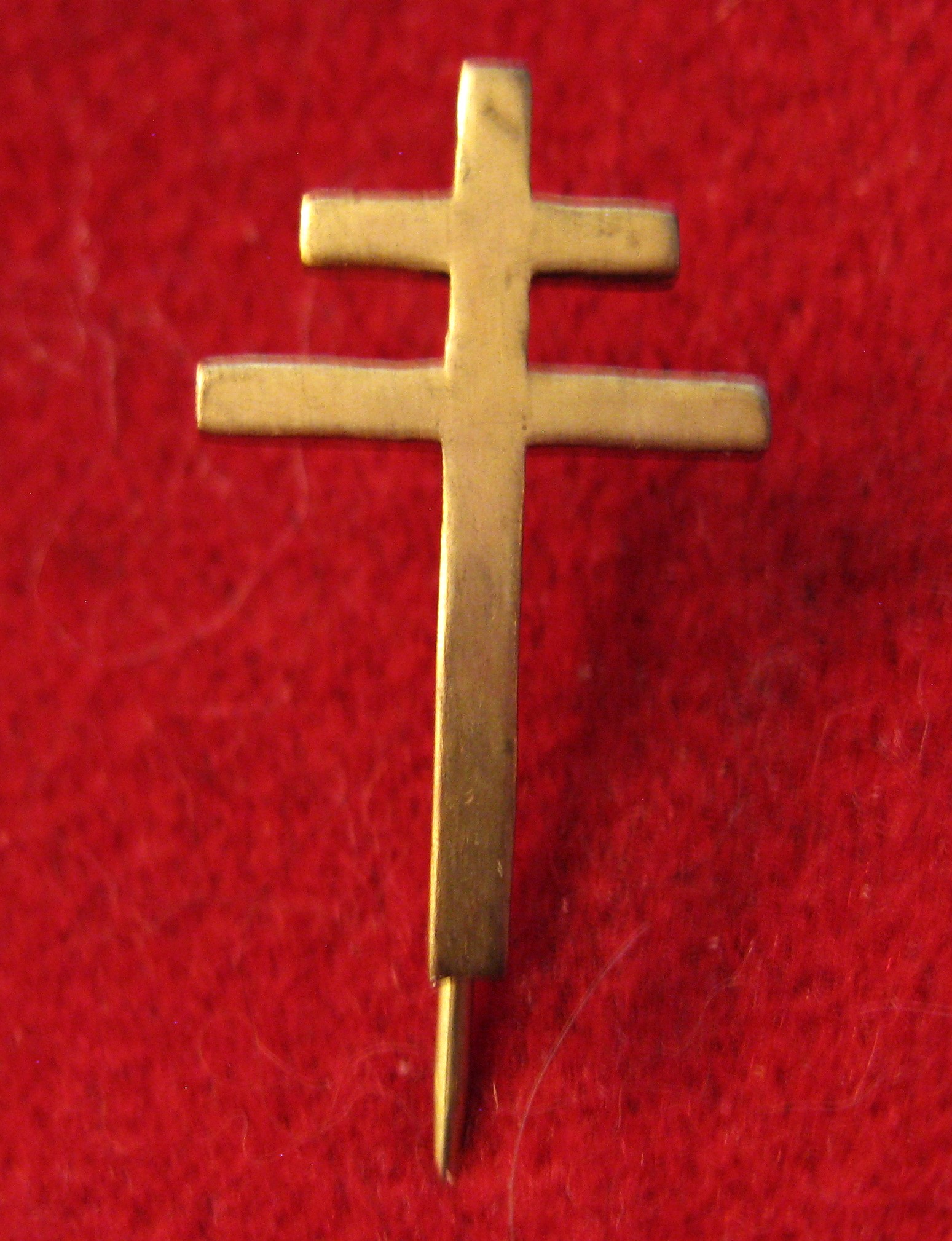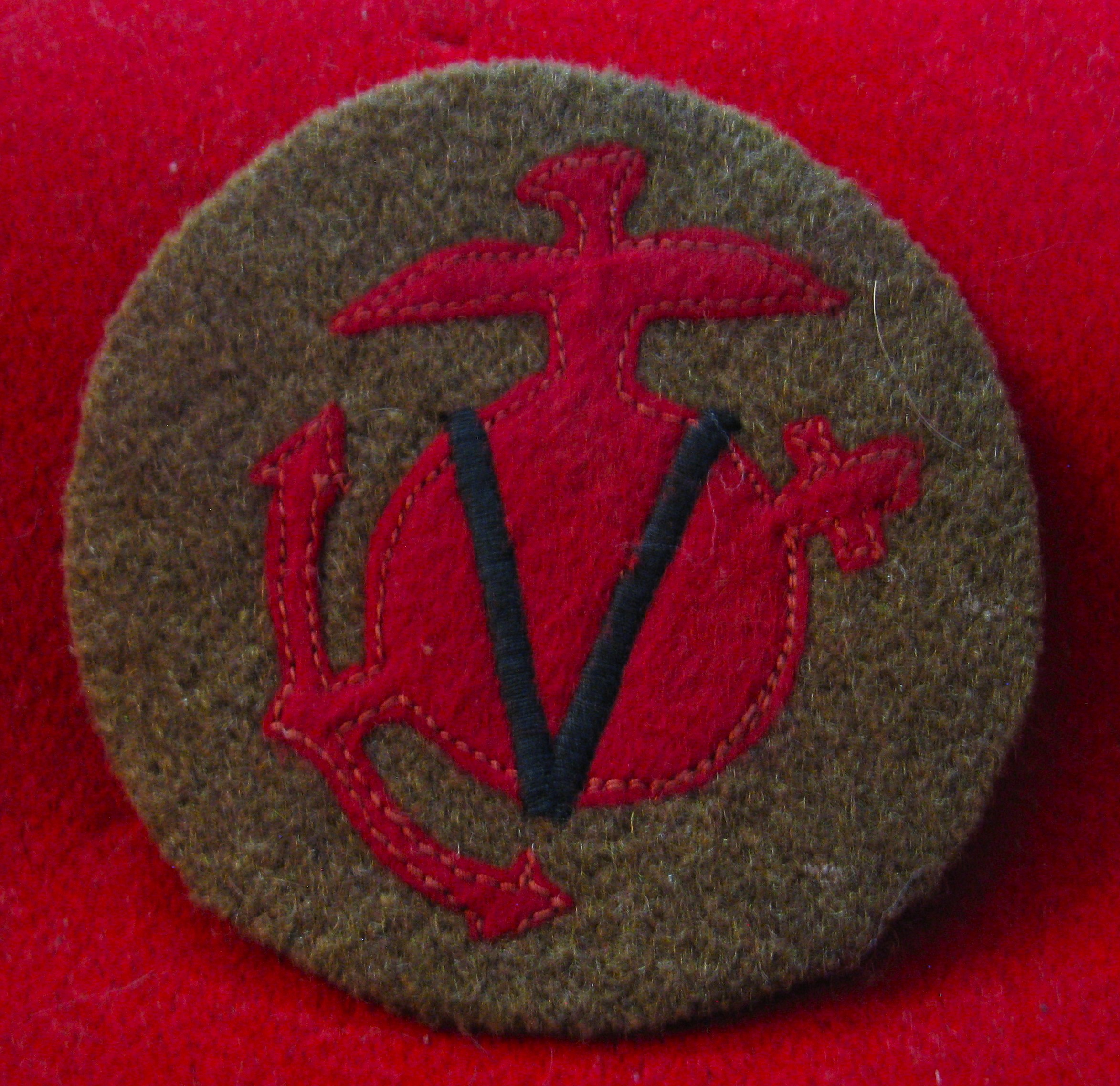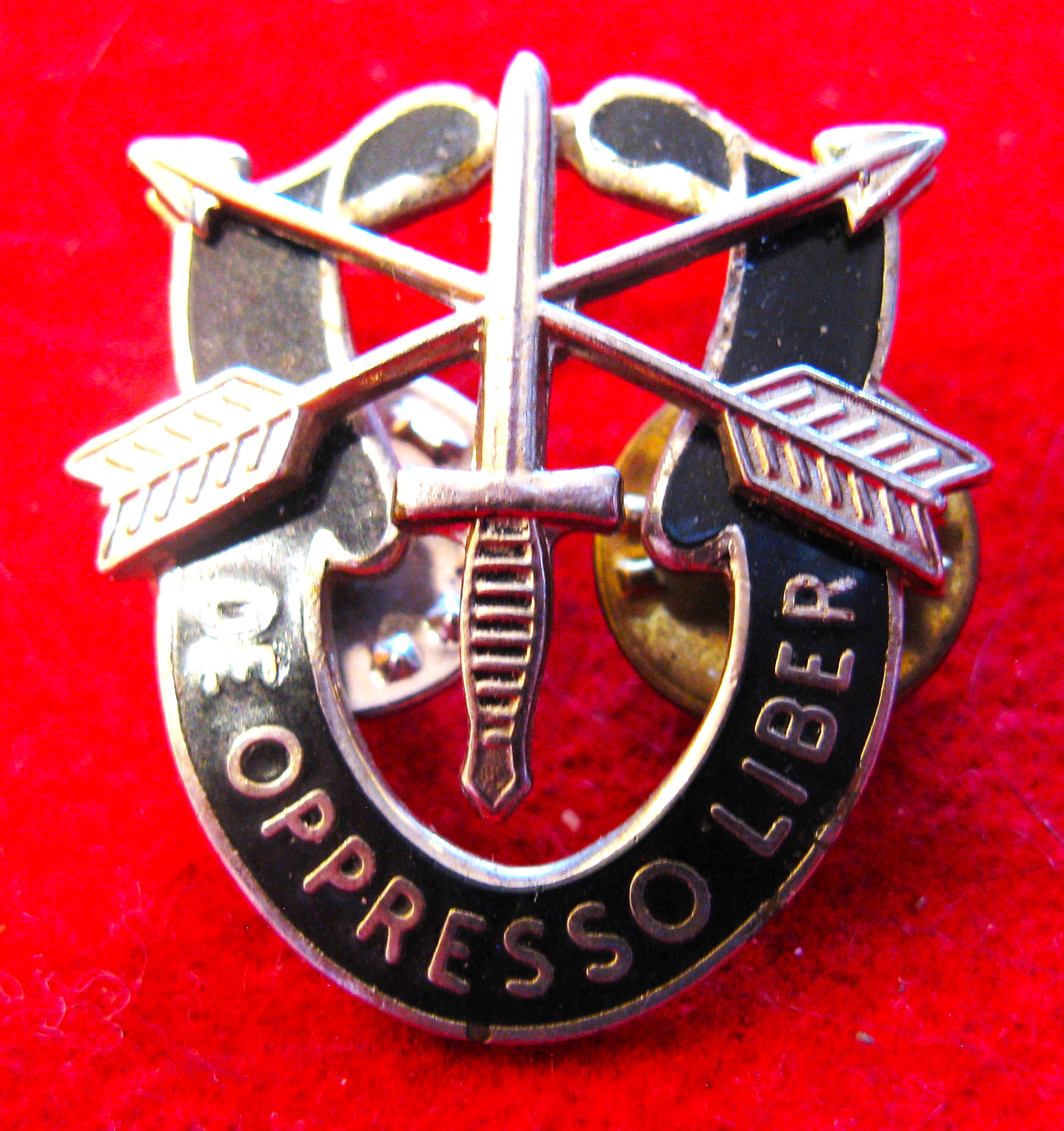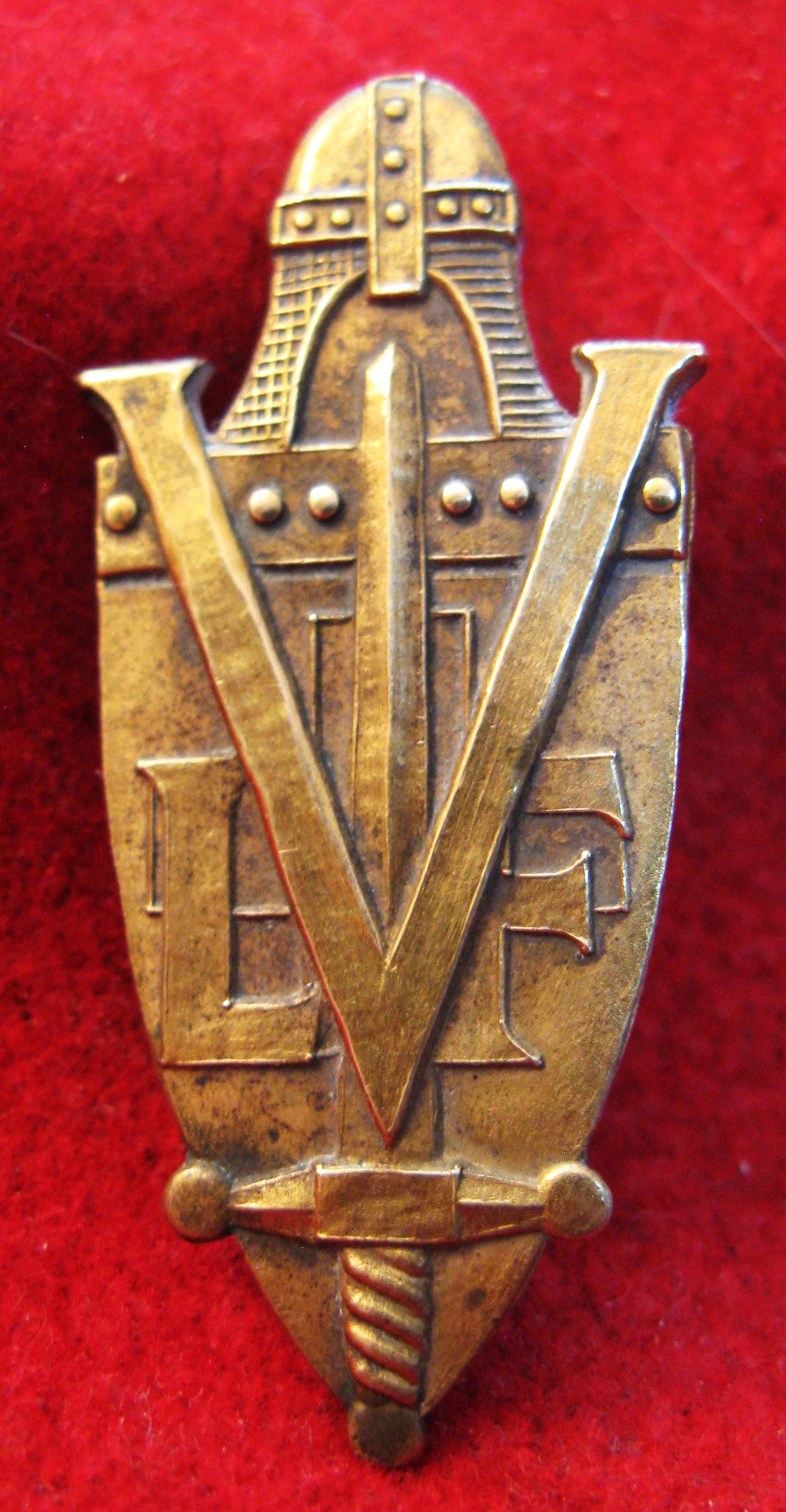A Brief History of the Canadian War Effort in WWI
#00001653
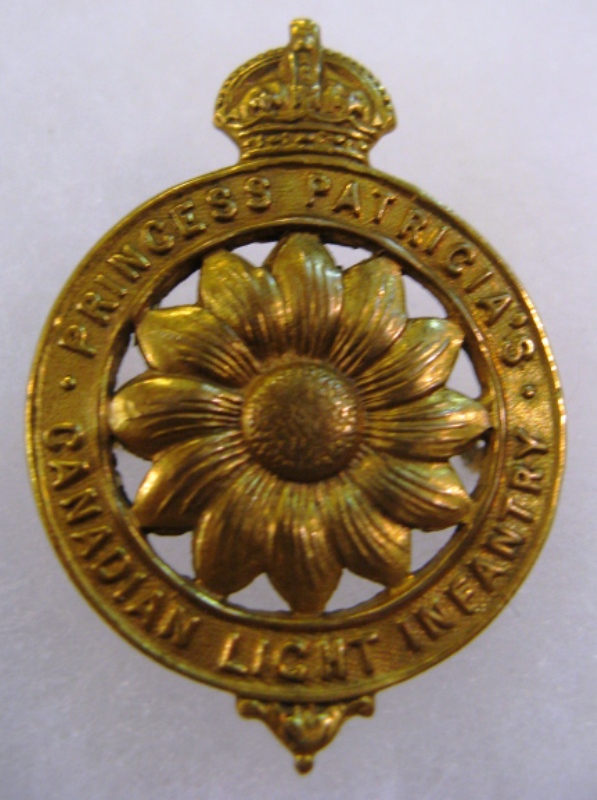
|
A Brief History of the Canadian War Effort in WWI
August 4th 1914
When George V and Great Britain declared war on Germany, Canada automatically began to get ready for hostilities. The Imperial Government of Great Britain notified the Canadian authorities to prepare their home defenses first.
- On August 15th the message went out calling for 25,000 volunteers to form the 1st Canadian Division. The response was so overwhelming that there was suddenly enough volunteers to form 2 divisions, and easily enough to care for the home defenses.
- However, the Canadian government, under Sir Robert Borden, met on August 19th. in a special session, and decided to send a Canadian Expeditionary force to Europe.
- On September 15th the mobilization of the Canadian Army began at Camp Valcartier in Quebec.
- October 3rd saw the departure of the members of the 1st Canadian Division on a great sea convoy of ships headed to England for more extensive training.
March 14th 1915
- By February 11th the First Canadian Division was proceeding by section to the Flanders salient, in the St. Eloi region.

- The first Canadian unit engaged the Germans on March 14th 1915. It was the prestigious Princess Patricia's Light Infantry who received the first bloody christening into the severity and rigors of this new war.
- However two days later, on March 16th, undaunted and advancing along side the British, the Patricias got their second chance and turned the German advance at Neuve Chapelle to go on to recapture St. Eloi.
- On April 22nd the Germans launched the first gas attack of WWI. This occurred in the Ypres salient and it was again the Canadians at St. Julien who, for five days, took the full brunt of this. After the five days the British high command decided to shorten the Ypres front and the Canadians are finally withdrawn.
- eIn early May, Sir John French, British Commander in Chief, paid public tribute to the First Canadian Division, saying "They saved the situation". This stand made by the Canadians turned the second Battle of Ypres into a victory, and a new word was added to the English language : "Yipes" the English speaking soldier's rendition of Ypres?.
- On May 16th the Canadians again moved up to the line. They performed a support roll for the French army at the Battle of Festubert and for ten days they engaged the Germans near Souchez.
- Pulled out of that line, the Canadians re-entered the frey once again at Givenchy, on June 15th and over 7 days of fierce fighting they stopped the German advances again and again.
- After a relatively quiet August, The first Canadian Division was called on to assist the great allied offensive at Loos, near Champagne, advancing near La Bassee, on September 23rd.
- By September 30th they had gone into their winter quarters and during that winter they would invent the "Trench Raid", which was used by all forces from that time until the ending of the war with a serious demoralizing effect upon the enemy.
April 3rd 1916
- From April 3rd until April 12th, the Canadians found themselves once more confronting the Germans at St Eloi, and suffering many additional casualties in the process.
- By June the Canadians were in Sanctuary Wood. During this bitter Battle of Hooge they engaged unsuccessfully in hand to hand combat with their German adversaries. Costly lessons to be learned?
The Germans called our Canadian Highlander Battalions "The ladies from Hell"
But later that month, during the 3rd Battle of Ypres, the Canadians successfully counter-attacked and regained the ground they had lost in Sanctuary Wood and Hooge. This resulted in a return to a situation similar to the beginning of June. ( Many casualties, but very little real success to show for it.)
- By August most of the Canadian Brigades had been relocated to the region of the Somme.
- From the middle of September until approximately October 3rd, the Canadian Army engaged the Germans in and around the village of Courcelette. This fierce battle resulted in some of the heaviest casualties the Canadian Brigades suffered so far in the war. They held their ground, however, and actually made a successful two mile advance over their four mile front, at the battle of Mouquet Farm on September 16th & 17th.
- In early October the Canadian Line was involved in the most horrific trench warfare so far in the war. This took place in our Regina and Kenora trenches, but our boys held firm delivering heavy losses to a much larger German force.
- Nov 17th and 18th saw the Canadians distinguish themselves once more by holding Desire Trench against the withering fire of their formidable German adversary. This "war to end all wars" was now about to enter its 4th year.
January 1917
- The fourth year of WWI opened with the Canadian Brigades firmly entrenched along the Ypres salient. January and February saw innumerable raids, trench fights, and patrol encounters being the order of the day, and in most of these our Canadian boys were the aggressors
-
In March the German Army drew back to the Hindenburg Line. This move was followed closely by the historic advance of the "New Canadian Army", now lead by Canadian officers under the command of General Sir Arthur Curry. Previously, Vimy Ridge had been impregnable. The French army had suffered over 300,000 casualties trying to take this high point called Vimy Ridge. Now it was Canada's turn...
- The attack began on April 6th with the Canadian Army eventually driving far into the German lines, capturing many prisoners, amo dumps, dressing stations, field hospitals, many artillery pieces, vehicles, and other enemy military equipment. Casualties were high, and Victoria Crosses and the other Empire valour medals were the order of the day. It has been justly stated that it was on this battlefield that our young Canada really became a nation. The eyes of the world now turned toward this citizen's army composed of store clerks, farmers, cowboys, and woodsmen that came from some distant frontier nation of a little more thn 6 million people far away, over the ocean, called "Canada".
- By the end of April, the Canadians had taken Arlieux from the Germans, and were advancing on Lens. The Canadians volunteered to storm Lens but were ordered to stand down by the British High Command, since they were a now a respected and formidable fighting force that was not to be wasted in a fruitless attack...
-
On May 3rd the German attacked Fresnoy. They were stopped in their tracks, and the Canadian Army continued its advance, exerting pressure through repeated bombardments, trench raids, and gas attacks. Finally after several attempts, the last German strong point on the ridge, called "Hill 70", was taken.
The Battle of Vimy Ridge was over.
-
- By October 25th the advance from Lens toward Paschendaele had begun.
- During this Flanders offensive, the Canadian Battalions eventually achieved all their objectives, but sadly, the price was again very high in terms of casualties.
- November 10th saw the Canadians retiring to their old positions in the Lens area were they prepared for the long winter campaign.
January 1918
- Now the Canadians had shown the British and the world their fighting metal as a self contained military unit. 1918 opens with the new army holding a 13,000 yard front in the trenches between Archerville and Loos. The four divisions of Canadians in this line are set up with 2 holding the trenches and alternating with 2 in reserve back from the front line and involved in training the new arrivals of officers and enlisted ranks.
Russia had withdrawn from the war due to their internal Bolshevik rebellion. To help cope with the expected results of this situation, Canada began to strengthen and expand its engineer corps, its machine gun corps, artillery emplacements, and certain other service battalions. Besides this the Canadians had developed their own tank battalion with original tactics designed to save men's lives. This battalion was mostly composed of students from McGill University and the University of Toronto.
-
With the anticipation of the arrival of more German troops form the Eastern Front, the whole front line of the Canadian defenses was reconstructed with added emphasis on expanding the field artillery emplacements. Yet, all through the month of January 1918, there was little activity along the Canadian line.
- The onset of February, saw a great escalation in German attacks. These had been expected and were repelled by the Canadian's new artillery installations, and the troops aggressive counter-raids, and gas attacks.
- The German offensive continued through March, but having learned their lesson, they tnded to keep away from Canadian Installations. Their offensive was mostly to the southeast of the Canadian lines.
It was on March 23rd that the First Canadian Motor Machine Gun Brigade finally engaged the German Army just east of Amiens. Fighting along side their British comrades, they continued this fierce encounter without respite for 19 days along the Somme salient.
- On March 28th the Fourth Canadian Division was ordered into the fray along side the hard pressed British 56th Division, once again, on the bloody ground around St. Eloi. During this time, the Canadian troops increased their battle frontage from 13,000 yards to 22,000 yards, and shortly afterwards, during the Battle of Lys, they, once again, coming to the aid of battered British Divisions, increased the front they held to 29,000 yards, (over 15 miles). The Canadians further relieved the pressure on the British lines, by adopting a new highly aggressive posture for harassing the Germans, and consequently making their enemy much more cautious about attacking.
- By May 1st the comparatively small Canadian Army was holding a front of over 20 miles out of the 100 mile front belonging to the whole British and Colonial Army combined. During the slight respite of early May the Canadians took the time to reorganize, train new arrivals, and prepare for the coming counter-offensive.
- The time of defensive and resistance tactics was coming to an end; and by June 15th the Canadian trenches were ordered to begin minor probing offensive actions against the German lines.
- Throughout the summer these actions increased in magnitude, and on August 8th the army moved south to the Amiens front. Unnoticed by the Germans, the allied armies made a concentration of forces in preparation of their first major counter-offensive operation.
- August 9thsaw the Canadians, forming the spearhead of this attack. They quickly advanced 15 miles into the Picardy region taking 26 German occupied villages and towns away from Imperial Germany. The Fourth Canadian Division engaged the enemy on August 11th and fought off a vicious German counter-attack near the town of Hallu. During August 12th to 14th, they captured the German strongholds of Parvillers and Damery occupying a whole network of enemy trenches. By the 18th of August, Fransart and La Chavatte had fallen into Canadian hands.
- The Canadian Divisions in the Amiens salient had completed all their assigned operations in the area by August 22nd. In the process they had defeated 10 Imperial German divisions and severely crippled 5 more. They captured 9,131 prisoners, 190 heavy guns, more than 900 machine guns as well as numerous trench-mortars.
- On August 26th, having returned to their former lines north of Amiens, our boys launched another offensive against the Hindenburg Line just south of the River Scarpe. During this offensive they captured the Egert Trench, including the Heninel Ridge, along with the villages of Monchy-le-Preux and Guemappe. The next day the 2nd Canadian Division captured the villages of Cherisy and Vis-en-Artois, on the east side of the Sensee River.
- The 3rd Canadian Division moved against the Fresnes-Rouvroy Line. By the end of day on August 28th they had broken the German line form the Sensee River to north of Boiry-Notre Dame, and captured the communities of Bois du Vert, and Bois du Sart.
- The 1st Canadian Division was called upon to reinforce the 2nd Canadian Division and together they pushed through to capture the Upton Wood and the southern end of the Fresnes-Rouvroy Line. The month comes to an end on a positive note. These Canadian farm boys and shop clerks had definitely turned the magestic Imperial German Army.
- September brought more positive results along the Canadian Line. On September 2nd they launched a major offensive against the main Hindenburg line defenses along the Drocourt-Queant trench system. This offensive was so successful that it became a major factor in convincing Von Ludendorff that the Hindenburg Line could not be held through the coming winter. In this encounter the 2 Canadian Divisions involved took 5000 prisoners, defeating 7 German Divisions and again penetrating over 3 miles into the German held territory.
- On Sept 27th Bourlon Wood was taken thus opening the way for the advance of the 3rd British Army. The next day the Canadians broke up a German counter-attack and went on to penetrate the Marcoing Line, as far as St. Olle, capturing the towns of Fontaine-Notre Dame, Raillencourt, and Sailly as they went.
- The end of September saw the Canadian Army begin the drive toward Cambrai advancing to the junction of the Arras-Bapaume and the Donai-Cambrai roads. They cut the Cambrai railroad and thus was the beginnings of the Cambrai encirclement. During these five days, though suffering heavy casualties, the Canadians again showed their true metal by capturing another 7059 prisoners, and 205 more heavy guns. They broke the Hindenburg line, resisting numerous heavy German counter-attacks and completely destroying the German resistance in their sector.
- Having broken the Hindenburg line the Canadians were now in position to attack the rear of the German flank to the north. The mighty German war machine was now beginning to crack.
October 8th saw three Canadian divisions pushing toward Cambrai. By the time the army had forced a crossing of the Canal du Nord, their advance patrols were already on the outskirts of the city. During the next two days of hard fighting they took ground around the north of Cambrai. By the evening of Oct 11th they had taken the village of Iwny and the high ground around it, fighting off a German counter-attack in which they destroyed six of the seven German tanks used against them. This was the final encounter of the battle of Cambrai.
- From August 26th to October 11th the Canadian army advanced 23 miles into German held territory. They engaged and defeated 31 battle hardened German Divisions, took 18,585 prisoners, 371 heavy guns, and 1923 machine guns.
- The advance continued. By October 19th the Canadian Army had pushed even farther into German held ground liberating another forty-some towns and villages. They were now across the Canal du Nord, with a front established at Douai. Toward the end of the month, however, the German resistance began to increase again in this area, but the Canadians kept up the pressure.
- November 1st saw the capture of Valenciennes, and by the 5th they had crossed the River Aunelle and have entered Belgium.
- By November 7th Baisieux and Quievrain had been liberated, along with the valuable coal district of Belgium. The Canadian juggernaught continued to move forward.
- The 8th of November saw the Canadian Army cross the Conde-Mons Canal now in open pursuit of the retreating German Army in front of them.
- By the 10th of November they were on the outskirts of the city of Mons.
- On the day of the armistice, November 11th, 1918, the Canadian Army was occupying Mons. In the end they had pushed the Germans back to where the original BEF forces had first engaged the Germans in 1914.
- The official record states that from October 11th through November 11th the Canadian Army fought their way across 91,800 yards of German occupied territory. Between August 8th and November 11th they captured 31,537 of the enemy, 623 heavy guns, 2842 machine guns, and 336 trench-mortars. They liberated over 800 square miles of territory and 228 cities, towns, and villages. And they defeated 47 German divisions (almost ¼ of the total German Army on the Western Front)
- The total number of men who had gone overseas with the Canadian Expeditionary Force (CEF) as of November 15th, 1918 was 418,052. Not bad for a country with a population of just over 6 million.
- By December 31st 1914 the number was 30,999
- During 1915 - 84,334
- During 1916 - 165,553
- During 1917 - 63,536
- From Jan 1st 1918 until November 15th 1918 - 73,630
- On Sept 30th, 1918 there was a standing Canadian Army on the continent of 160,000 men, and a reserve army in England of another 116,000
- The total number of casualties in the CEF, as reported on January 15th, 1919, was 218, 433 (more than 1 in 2, over 50%) the breakdown is as follows :
- Killed in action ..... 35,684
Died of Wounds ..... 12,437
- Died of Disease .... 4,087
- Wounded .... 155,839
- POW .... 3,049
- Presumed Dead and missing ..5080
- Died in Canada .... 2387
The Maple Leaf Forever (With Lyrics) - Bing video
We stand on guard for thee...




